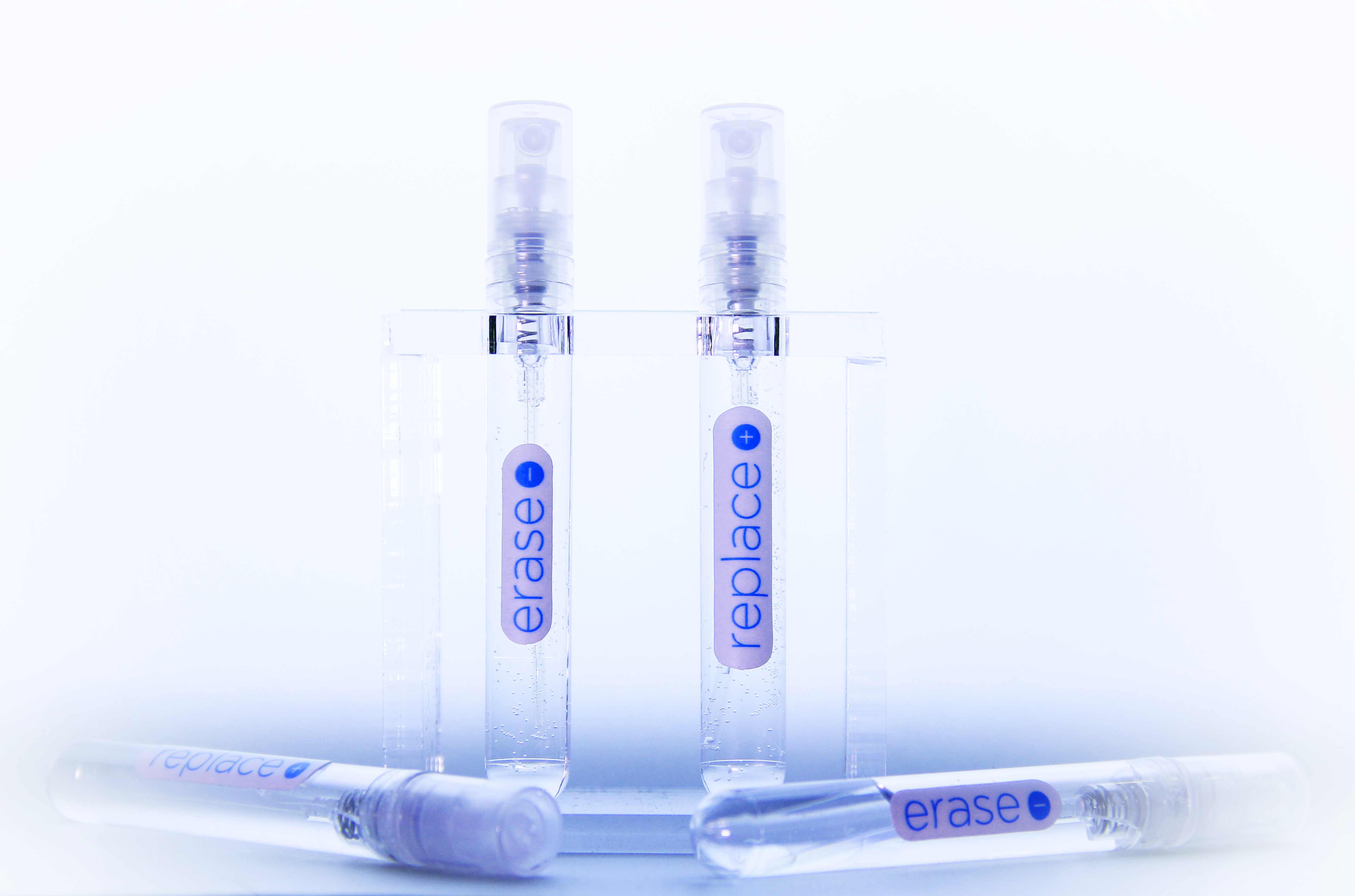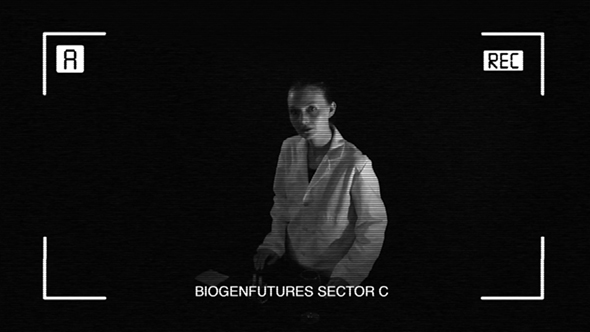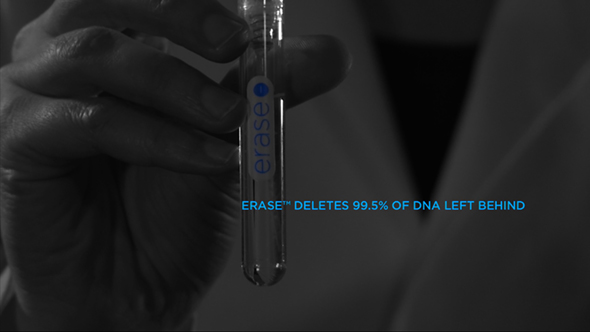
It shows how completely genre TV has appropriated the concept of DNA identification that one would immediately associate Invisible—artist Heather Dewey-Hagborg's product-provocation designed to protect "against new forms of biological surveillance"—with murder scene clean-up. Invisible comprises two bottles of spray: Erase and Replace. The former deletes 99.5% of DNA residue; the latter is "a solution of customized amplified DNA" designed to "obfuscate the remaining .5%." Together they could certainly be used to "spoof" the site of a crime, but Invisible's stated purpose is firmly focused on the quotidian-dystopic, a new SF sub-genre attempting to describe the daily grind of the immediate future.
The product's launch video incorporates visual strategies from apocalyptic films (scene-setting turbulent news footage) and tropes from sci-fi viral-thrillers (surveillance camera footage, a color palette of washed out blues on black). The marketing copy argues that only "You should be in control of how you share your information." Dewey-Hagborg positions Invisible as a necessary tool in an emergent world where the logic of data-mining extends away from the keyboard, right down to your genome.

Suggested uses include eliminating DNA samples left at a job interview or an illicit tryst, both gesturing to the practical limitations of the product. Imagine standing up from a conversation with a prospective employer, refusing to shaking hands, then blasting your seat, the doorknob, and the pen/iPad you manipulated. Wouldn't go over too well. (Unless perhaps you're auditioning for EFF or CIA). And each bottle holds only 4.4mL (a pair of Erase and Replace run for $230), so you'd have to go through more than a couple to scour a post-rendezvous hotel room.
But it would be missing the point to review Invisible solely as a product. (And futile, as I don't have a home lab.) Rather, it's a provocation similar to Dewey-Hagborg's previous project Stranger Visions, for which she created speculative portrait sculptures based on DNA retrieved from public places. Neither are spawns of corporate R&D, but rather DIY bio-art. If Dewey-Hagborg can develop and market Invisible with relatively limited means, imagine what corporate and government projects are capable of. In the age of Wikileaks, we constantly congratulate ourselves on the transparency brought to bear on the state and the corporation. Perhaps we’ve forgotten our good old Burroughsian paranoia about what we don’t know...

Still, Invisible is a challenge in a way Stranger Visions wasn't. If Stranger Visions demonstrated the far-reaching tentacles of surveillance tech, Invisible suggests a (so-far legal) means of combating it. There's no reason to think this mixture could not be mass produced, driving the price point down to placement at your (admittedly, constantly-surveilled) national pharmacy brand. Further permutations suggest themselves: a roach-bomb-like grenade for single-room eliminations, or a perfume/cologne. (Invisible, after all, does sound like the latest b-list celebrity scent.)
Coupled with an artwork like Sean Raspet's Untitled (Registration/PIN: G0009296/78GY76DM; G0009297/99ER43TB; G0009298/39ZL54SJ)—for which gallery walls were covered with synthetic DNA trace-goo to create "a paranoiac or obsessive awareness of surfaces in the visitor"—Invisible brings public discourse about biotech out of the backwater of syndicated crime serials, staking out an uncertain position between dystopian fiction and dystopian fact.
Corporate Synergy Disclosure: Invisible will be sold solely through the New Museum Store. Rhizome is an affiliate of the New Museum.

